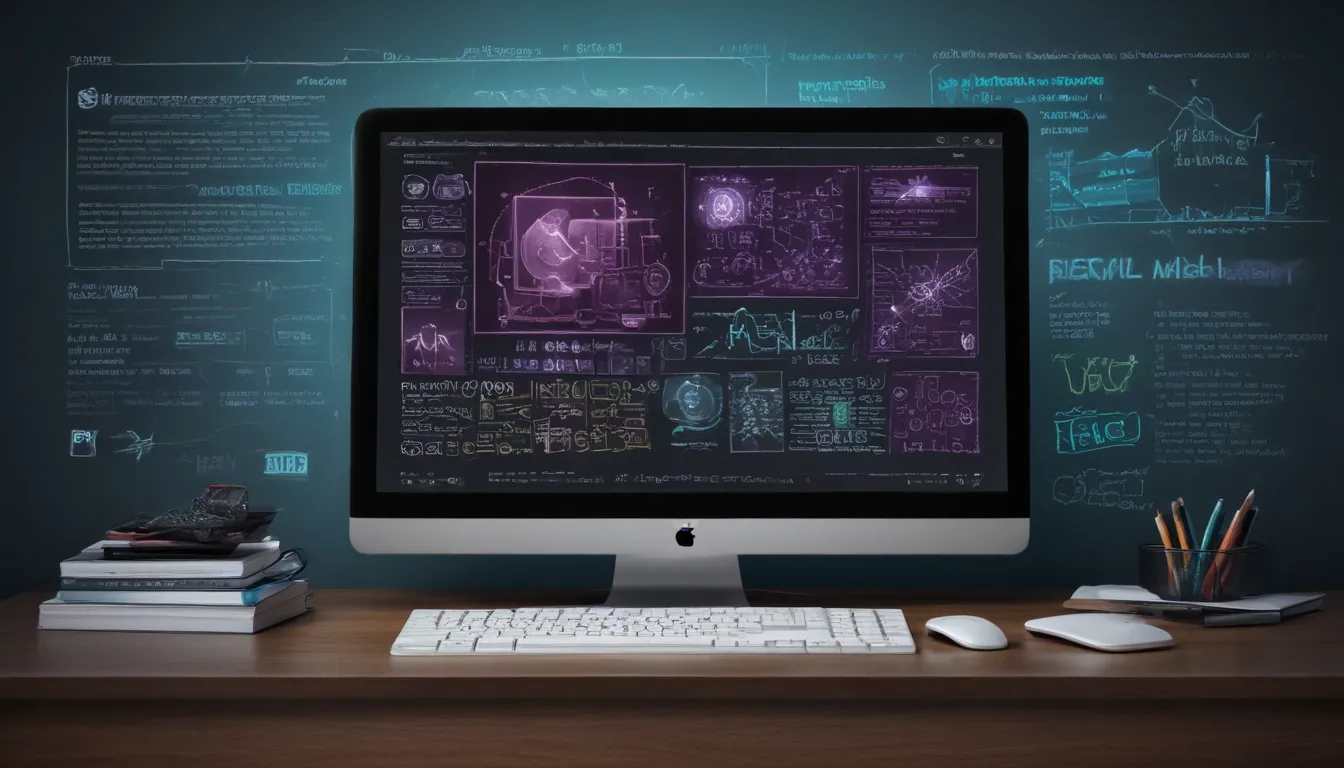A Note About Images: The images used in our articles are for illustration purposes only and may not exactly match the content. They are meant to engage readers, but the text should be relied upon for accurate information.
Are you ready to dive into the world of XAML (Extensible Application Markup Language) and unveil its secrets for GUI development? Whether you’re a seasoned developer or just starting your journey in software development, understanding the nuances of XAML is essential for crafting visually appealing and functional interfaces. In this article, we will explore 12 essential facts about XAML that every developer and tech enthusiast should know. From its role in defining UI elements to its seamless integration with programming languages like C# and VB.NET, XAML offers a versatile platform for building interactive and responsive user interfaces. Let’s embark on a journey to discover the fascinating world of XAML and unlock its potential for modern software development.
Delving into XAML: The Essential Facts You Need to Know
Let’s start by unraveling some key takeaways about XAML to set the stage for our exploration:
- XAML Overview: XAML, or Extensible Application Markup Language, serves as a powerful tool for creating user interfaces in .NET Framework applications. It supports data binding, responsive design, and animation, making it indispensable for building dynamic and visually appealing applications.
- Integration with Visual Studio: XAML seamlessly integrates with Visual Studio, Microsoft’s integrated development environment, enabling developers to design and develop sophisticated user interfaces with efficiency and precision.
Now, let’s delve deeper into the essential facts about XAML that will enhance your understanding of this versatile language.
Fact 1: XAML is an Acronym
XAML stands for Extensible Application Markup Language, a declarative XML-based language used for initializing structured values and objects. Commonly utilized in creating user interfaces in .NET Framework applications, XAML plays a vital role in defining the appearance and behavior of UI elements. Its declarative nature facilitates efficient collaboration between designers and developers by separating UI design from the application logic.
Fact 2: XAML Supports Data Binding
A key feature of XAML is its robust support for data binding, which establishes a connection between UI elements and the underlying data source. This capability ensures that changes in one automatically reflect in the other, enabling developers to create dynamic and responsive user interfaces that adapt to changes in data. By simplifying the synchronization process, data binding enhances the maintainability and scalability of applications.
Fact 3: XAML Enables Responsive Design
XAML empowers developers to implement responsive design principles, allowing applications to adapt to various screen sizes and orientations. By leveraging XAML’s layout and control features, developers can create adaptive user interfaces that deliver a consistent experience across different devices and form factors. Responsive design is crucial in today’s multi-device landscape, making XAML a valuable tool for building applications that dynamically adjust their layout and content.
Fact 4: XAML Supports Styling and Templating
Through comprehensive support for styling and templating, XAML enables developers to customize the appearance and behavior of UI elements. Styles define property values applied to multiple elements for a consistent look and feel, while templating allows the creation of custom UI controls with unique visual and interactive behaviors. This flexibility fosters creativity and innovation in UI development.
Fact 5: XAML Facilitates Animation and Transitions
Developers can enhance the visual appeal and user experience of applications by incorporating rich animations and transitions using XAML. These features bring UI elements to life with fluid motion, interactive effects, and smooth transitions, captivating users and conveying information in a visually engaging manner. From subtle micro-interactions to immersive visual effects, XAML provides the tools to elevate interactivity and aesthetics.
Fact 6: XAML Integrates with MVVM Pattern
XAML seamlessly integrates with the Model-View-ViewModel (MVVM) pattern, an architectural design pattern for building scalable applications. By isolating UI logic from business logic and data models, the MVVM pattern promotes clear separation of concerns, enhancing testability, maintainability, and extensibility. This integration empowers developers to build robust and adaptable applications by leveraging XAML in conjunction with the MVVM pattern.
Fact 7: XAML Enables Platform-Independent UI Development
With XAML, developers can create user interfaces that run across multiple platforms and devices, enabling maximum code reuse and streamlining the UI development process. The platform-independent nature of XAML allows for consistent user experiences across different operating systems, expanding the reach and impact of applications.
Fact 8: XAML Supports Resource Management
Efficient resource management is facilitated in XAML, where developers can centralize application resources such as styles, templates, and brushes. This centralized approach maintains a consistent visual identity and behavior throughout the application, promoting coherence and efficiency in UI development by simplifying customization and updates.
Fact 9: XAML Enables Localization and Globalization
XAML provides robust support for localization and globalization, empowering developers to create applications that cater to diverse linguistic and cultural preferences. By adapting UI content to different languages and regions, developers can provide a tailored experience for global audiences, expanding the reach and engagement of applications with multilingual interfaces.
Fact 10: XAML Facilitates Accessibility
Accessibility features in XAML-based applications enhance inclusivity and usability for users with diverse needs by enhancing the usability of applications for individuals with disabilities. By incorporating accessibility attributes and behaviors, developers can create inclusive experiences that accommodate a broad spectrum of users, prioritizing accessibility in XAML development.
Conclusion: Harnessing the Power of XAML for GUI Development
As we conclude our exploration of XAML, it’s evident that this versatile language offers a wealth of features and capabilities for GUI development. By understanding its key facts and harnessing its potential, developers can create intuitive, visually appealing, and responsive user interfaces across various platforms. Whether you’re diving into the world of GUI development or looking to enhance your skills, XAML stands as a powerful tool waiting to be unleashed in your next software project. Embrace the possibilities of XAML and embark on a journey to create compelling user experiences that resonate with users across diverse devices and form factors.
Now that you’ve delved into the world of XAML, equipped with essential knowledge and insights, it’s time to unleash your creativity and innovation in GUI development. Harness the power of XAML to craft visually stunning, accessible, and platform-independent applications that leave a lasting impression on users.
FAQs: Unlocking Further Insights in XAML
Q: Is XAML limited to a specific programming language?
A: No, XAML is not limited to a specific programming language. While commonly used with C# and .NET, it can be employed with other languages like VB.NET and C++/WinRT, making it a versatile choice for GUI development.
Q: Can XAML be used for developing mobile applications?
A: Yes, XAML can be utilized for developing mobile applications. With frameworks like Xamarin, developers can leverage XAML to create cross-platform mobile apps for iOS, Android, and Windows, tapping into its rich UI capabilities and flexibility.
At [Your Website Name], our dedication to delivering trustworthy and engaging content is at the core of our mission. Each fact shared on our platform is contributed by real users like you, ensuring a diverse range of insights and information. Rest assured that our dedicated editors meticulously review each submission, guaranteeing accuracy and reliability. Explore and learn with confidence, trusting in our commitment to quality and authenticity.
Unleash the power of XAML in your GUI development journey and embark on a path to creating immersive, dynamic user experiences that captivate and delight users across various platforms. Dive into the world of XAML and elevate your software development skills to new heights!






